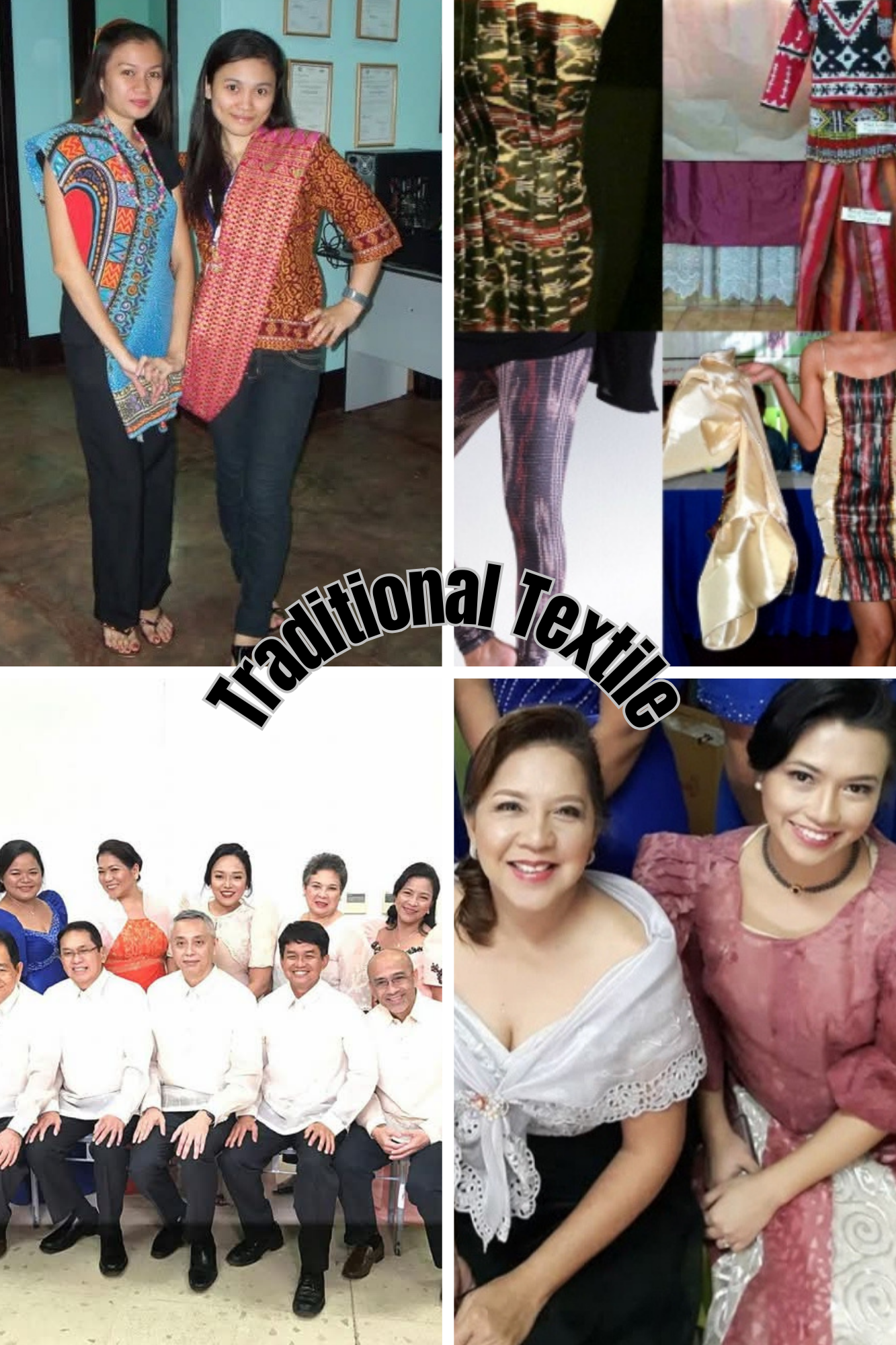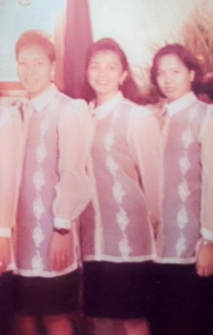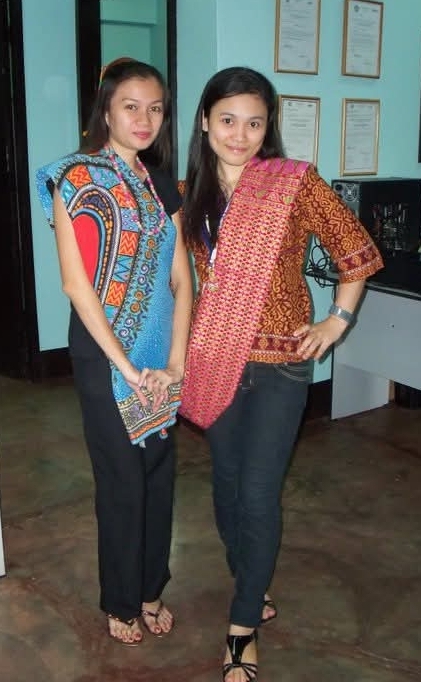Filipinos are rich in culture, and we have colorful costumes that we are proud to wear on SPECIAL OCCASIONS to showcase our great heritage. Aside from that, we have different ethnic groups in the three islands of the Philippines, namely Luzon, Visayas, and Mindanao, that represent the different traditional textiles. In this article I only choose a few of them and here are my picks:

-
BARONG TAGALOG and BARO'T SAYA
The Barong Tagalog for men and the Baro’t Saya for women are the most popular clothing that worked by hand into Filipino identity. The Filipino textile fashion was influenced by the Spaniards who colonized the Philippines from 1565 to 1898. It has continuously evolved and withstood the test of time after the Spanish era. The Barong or Barong Tagalog dates back to the precolonial era in the Philippines.

Anniversary Of The Regional Center In Los Baños
The "BARONG" has become the symbol of Filipino independence and resistance to colonization. Individuals and small groups of people had achieved socio-economic and cultural power in a way that they never had in the early days of colonization. Adherent to Catholic values, the "BARO'T SAYA" has been the symbol of the ideal Filipino woman, beautiful and conservative. The designs provided a way to distinguish the lower class from the aristocrats and had slight differences in the elements.

Scholars of the Regional Center

My Lady Boss of the Regional Center
Nowadays, the BARO'T SAYA is worn during pageants and theatrical performances and is occasionally chosen as political or bridal attire.

My Lady Boss As Godparent In A Wedding
The "BARONG" is considered to be the formal clothing for men in the Philippines. The garment is usually worn on very important occasions like weddings and ceremonial events. Barong is made of "JUSI" material (banana silk) or "PINYA" fabric (pineapple leaf). It also showcases exquisite embroideries. Today, women also wear the BARONG TAGALOG with a skirt as the undergarment.

My Officemates and I During the Anniversary of the Regional Center
On the other hand, "BARO'T SAYA" is a loose ensemble composed of Baro, a fine fabric blouse fitted with butterfly sleeves, and a Saya, an elaborate skirt made of plaid or striped cotton. It is the everyday dress of every Filipino woman during the Spanish colonial period. Other names for this dress are Maria Clara, Traje de Mestiza, or Terno.

My Lady Boss and A Friend During the Anniversary of the Regional Center
-
MODERN T'NALAK DRESS
The T'nalak pronounced as "TENALAK," fabric symbolizes the intricate and sacred patterns woven by the T'boli women. The enduring spirit and the journey from tradition to modernity, honoring the T'boli's legacy. T’nalak is a sacred cloth woven by the T'boli people in communities around Lake Sebu, Mindanao island. By memory and traditionally made by women of royal blood, thousands of patterns reference folklore stories. T’nalak has a distinctive tri-color scheme: white for the pattern, red for relief elements, and black (or deep brown) for the background. Prepared in a process known as kedungon fibers used in weaving are harvested from the abaca tree. Worked by hand into fine threads, two metal blades are used to quickly remove the pulp and reveal the filaments.

Showroom Display During Kadayawan Festival In Davao
In T’boli's culture, the T'nalak fabric holds a special and prominent place. Birth, marriage, and death are ever present at significant turning points in T'bolis' life. It is the medium that sanctifies these rites, enveloping them in the length of its fabric like a benediction. In a culture that didn’t have a form of writing, the T’nalak served as both Literature and Art. The T’bolis expressed everything they are in the T’nalak: their dreams, beliefs, myths, and even their religion.
-
MALONG or TUBE FABRIC
One of the most well-known and commonly used fabrics, manufactured by Mindanao weavers is MALONG. It is a versatile tube fabric from Maguindanao and Maranao and has long been a mainstay of Philippine traditional apparel; it can be used as dresses, skirts, trousers, capes, hammocks, prayer mats, a "dressing room," and more. Other weaving groups in the Philippines weave their versions of the malong under other names.

My Daughter and Her Friend During School Foundation
Malong is a traditional "tube skirt" created from handwoven or machine-made multi-colored cotton cloth with a variety of geometric or okir motifs. The Maranao Malong, called "LANDAP," has a design and style that could unveil the weaver's tribe origin.
Generally, both men and women alike wear it. They wrapped it over their entire bodies. The most popular way to style it is wearing the MALONG as a wrap-around skirt that reaches the wearer's feet. For ladies, this style of wearing the long is called Katinambed, and for men, Katampi. In addition, women usually drape one end of the long over their shoulders and wear it over their chest. We refer to this fashion as Kasinambir.

Thank you, #Hiveians, for fetching around my blog and checking out the post. Catch you on my next article.
1st photo edited by using Canva
All Glory and Honor to God


